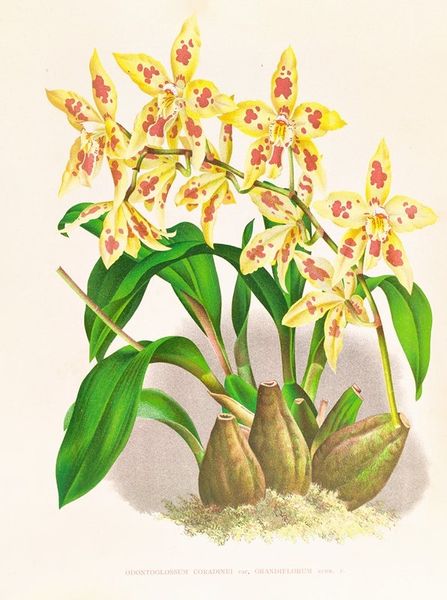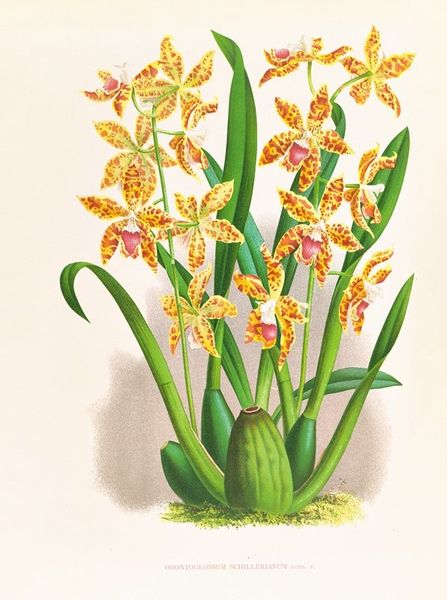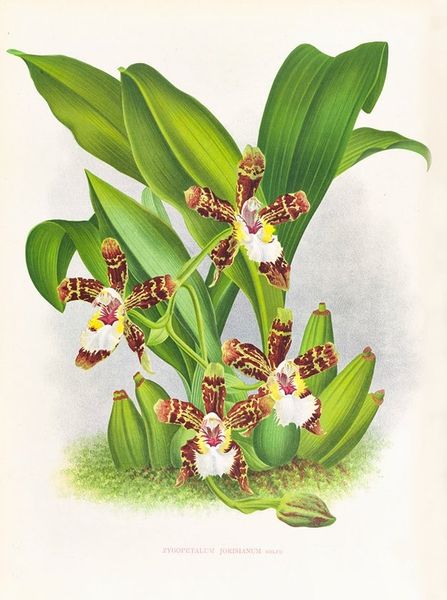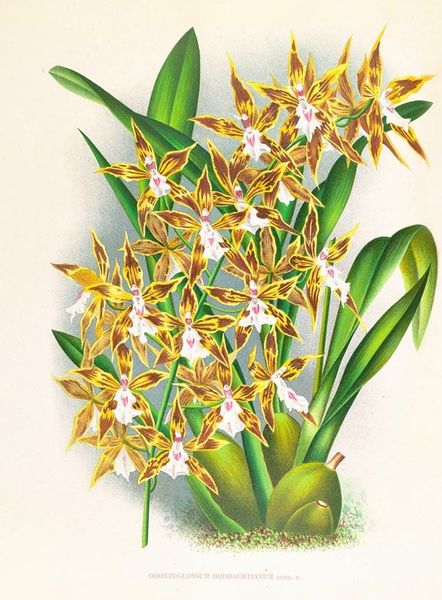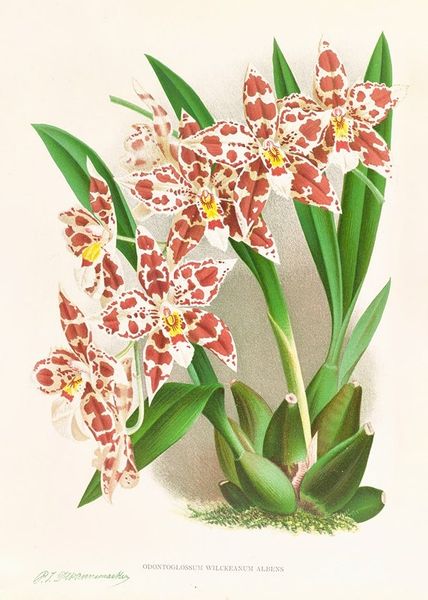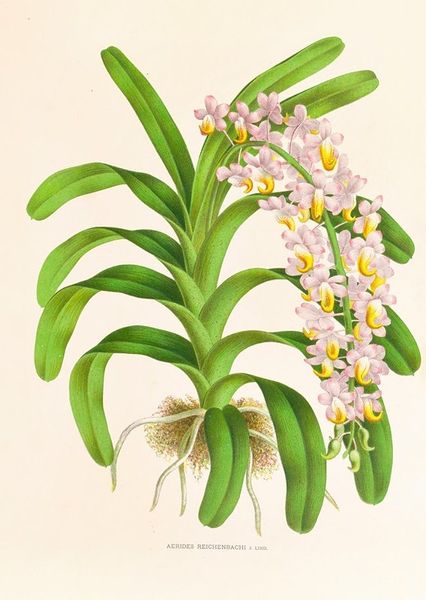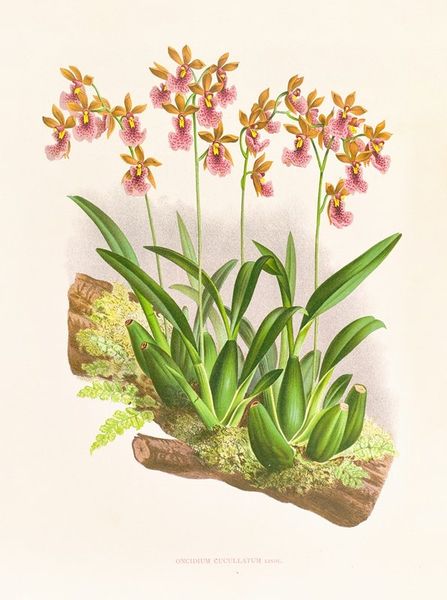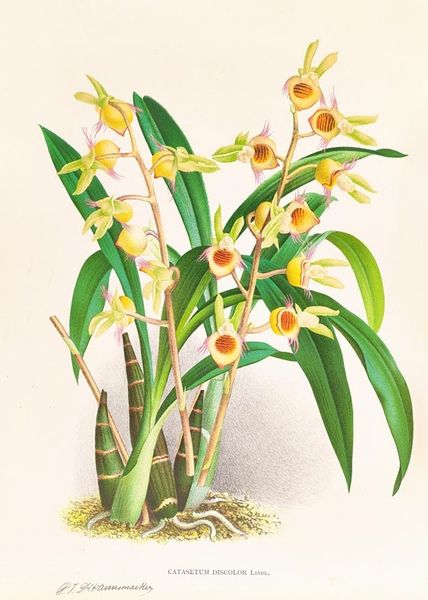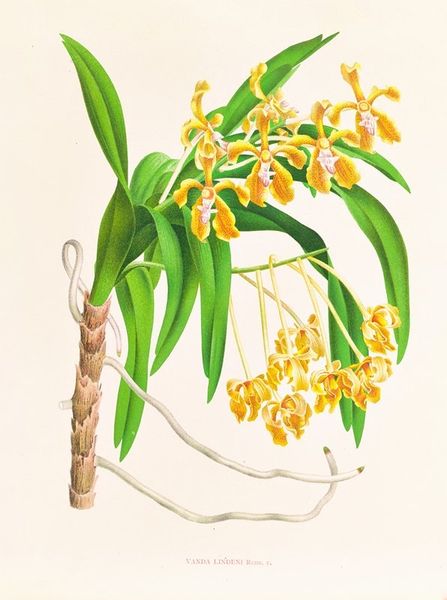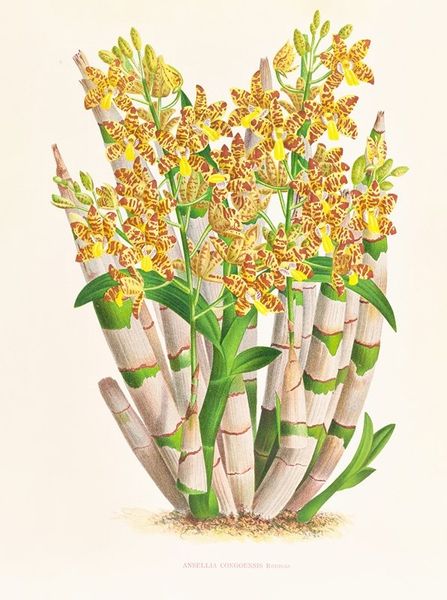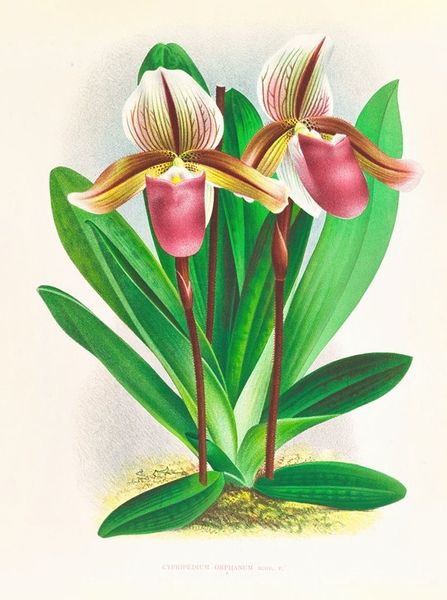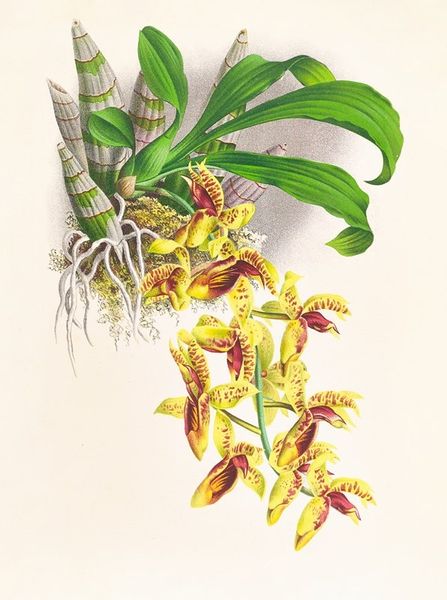
# print
#
naturalism
Copyright: Public Domain: Artvee
Editor: This is Cattleya guttata, a print by Jean Jules Linden created sometime between 1885 and 1906. The speckled petals are really striking. It gives me a kind of vibrant, almost exotic feeling. What jumps out at you when you see it? Curator: Oh, the orchid's siren song… It whispers tales of the Victorian obsession with the exotic natural world, a time when collecting plants was practically a competitive sport. But, beyond the obvious, I see Linden's incredible control. Notice how the specks, instead of becoming chaotic, dance in harmony, defining the flower's form. It's like pointillism but with nature as his muse. Editor: Pointillism! I can see that, in the way the little specks build to form the image of each flower. How does this piece fit into the naturalist movement? Curator: Naturalism wasn't just about depicting things accurately; it was about showing the inherent beauty and complexity of nature. Think of it as an attempt to capture nature's fleeting essence through art and scientific observation. This orchid is not just rendered realistically, it is imbued with a certain... spirit, almost alive on the page. What do you think? Does it capture a bit of the wild for you? Editor: Absolutely, and its beauty invites me to want to find out more about the era and the subject, even. Thanks! Curator: And that, my friend, is the seductive power of art: an open doorway into another world and time. I'll think I’ll go track one down, perhaps a miniature Cattleya.
Comments
No comments
Be the first to comment and join the conversation on the ultimate creative platform.
